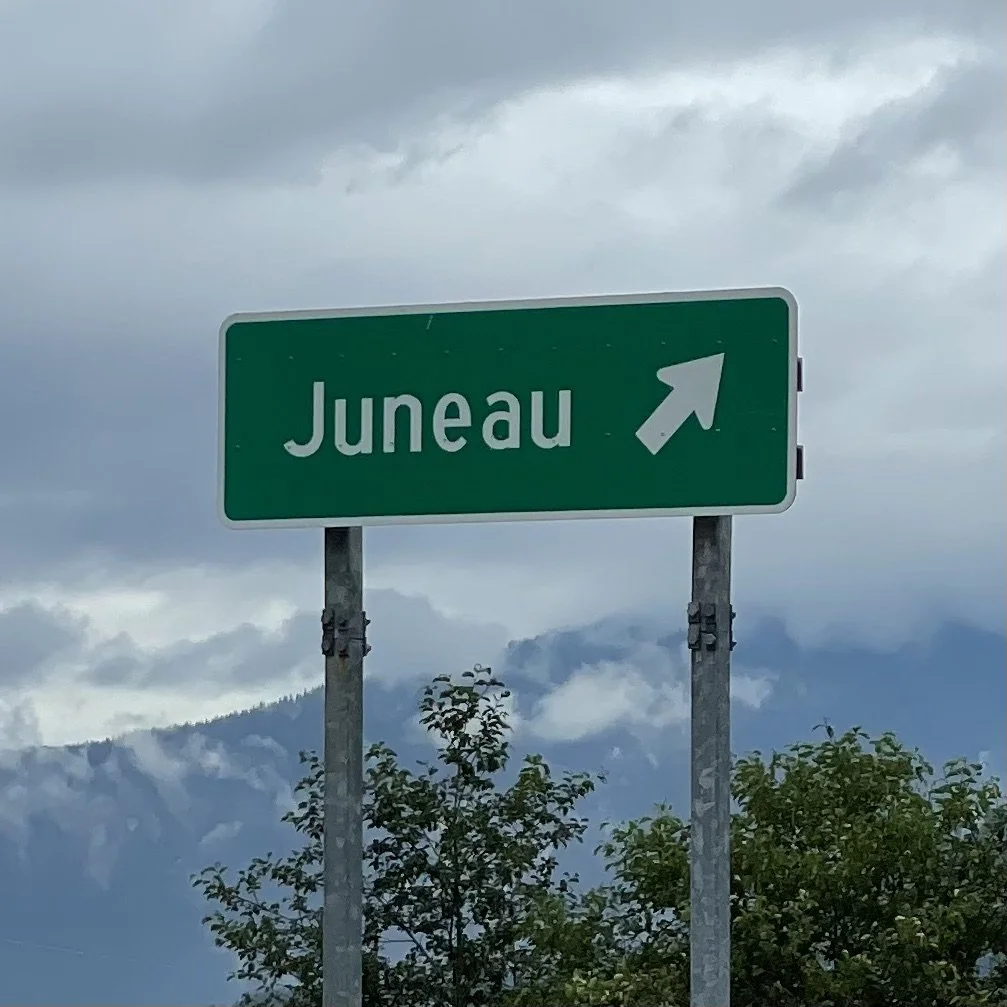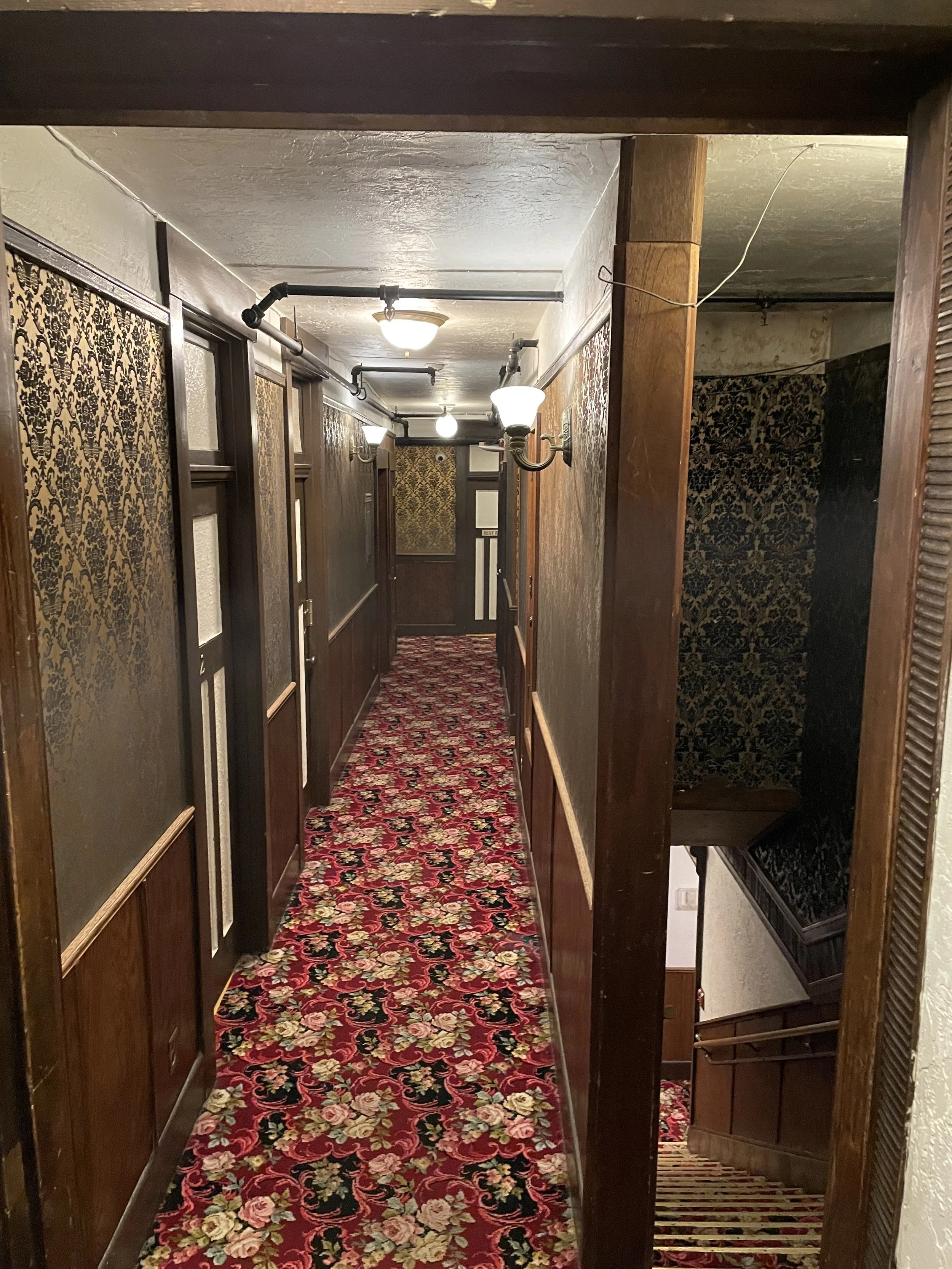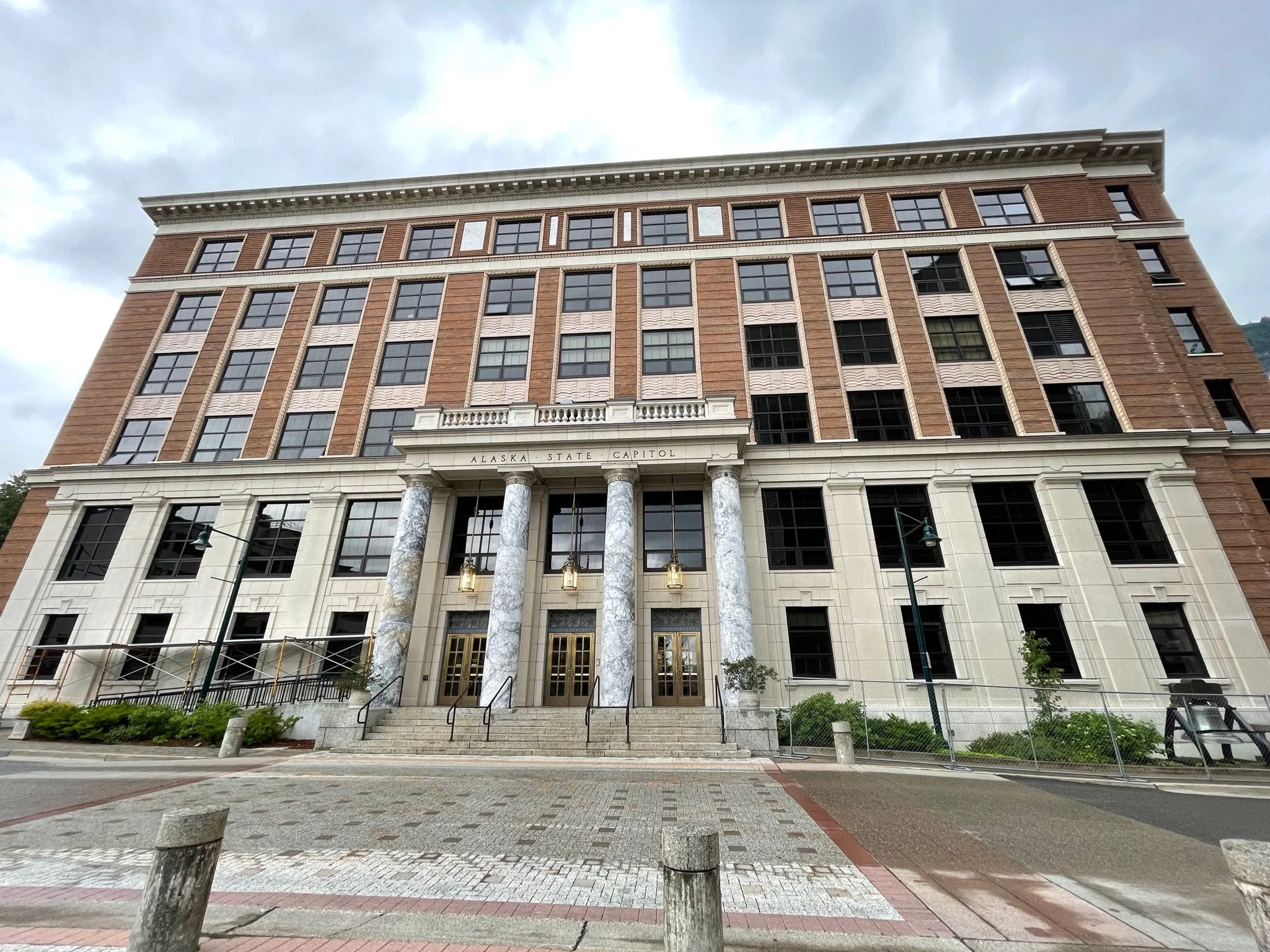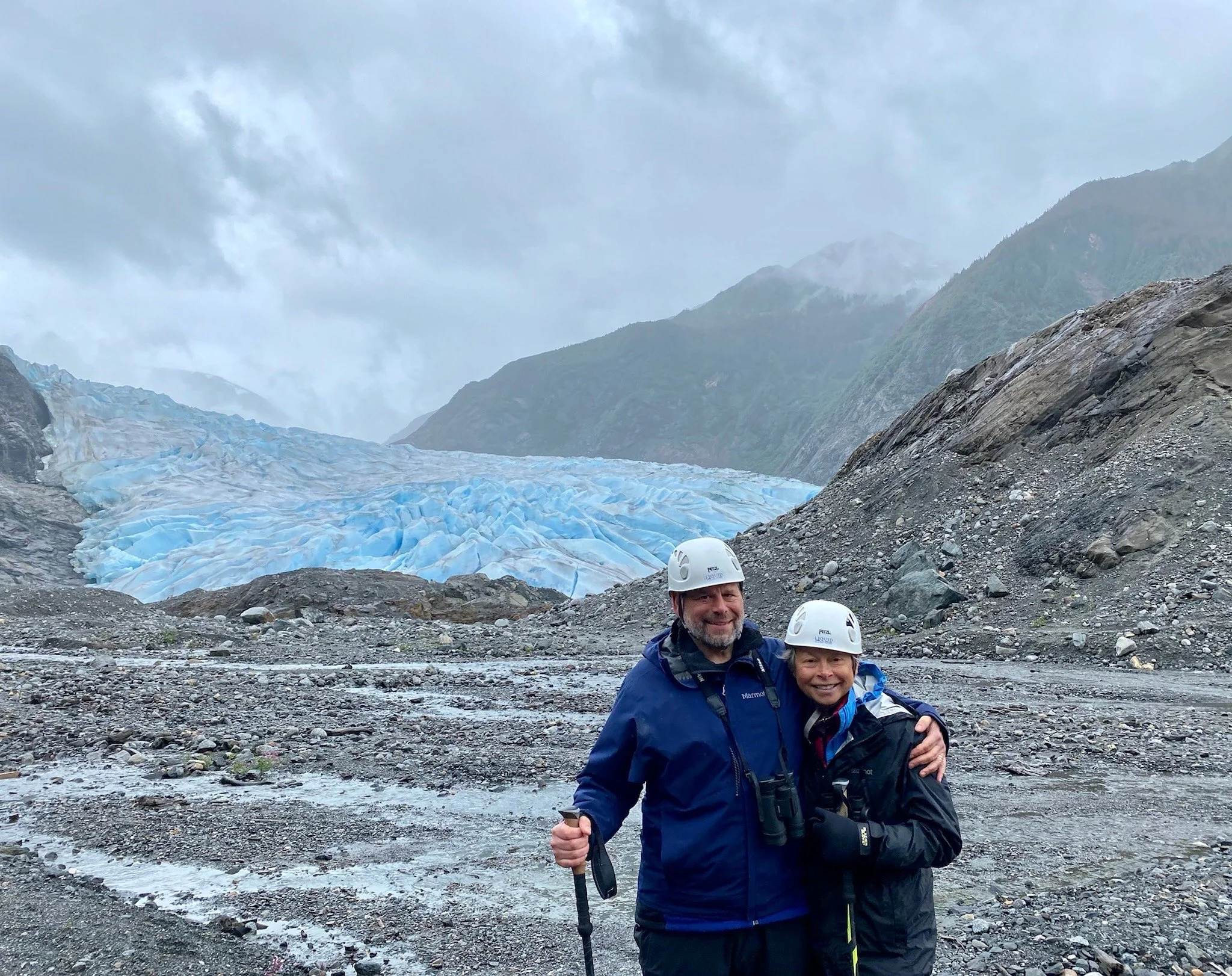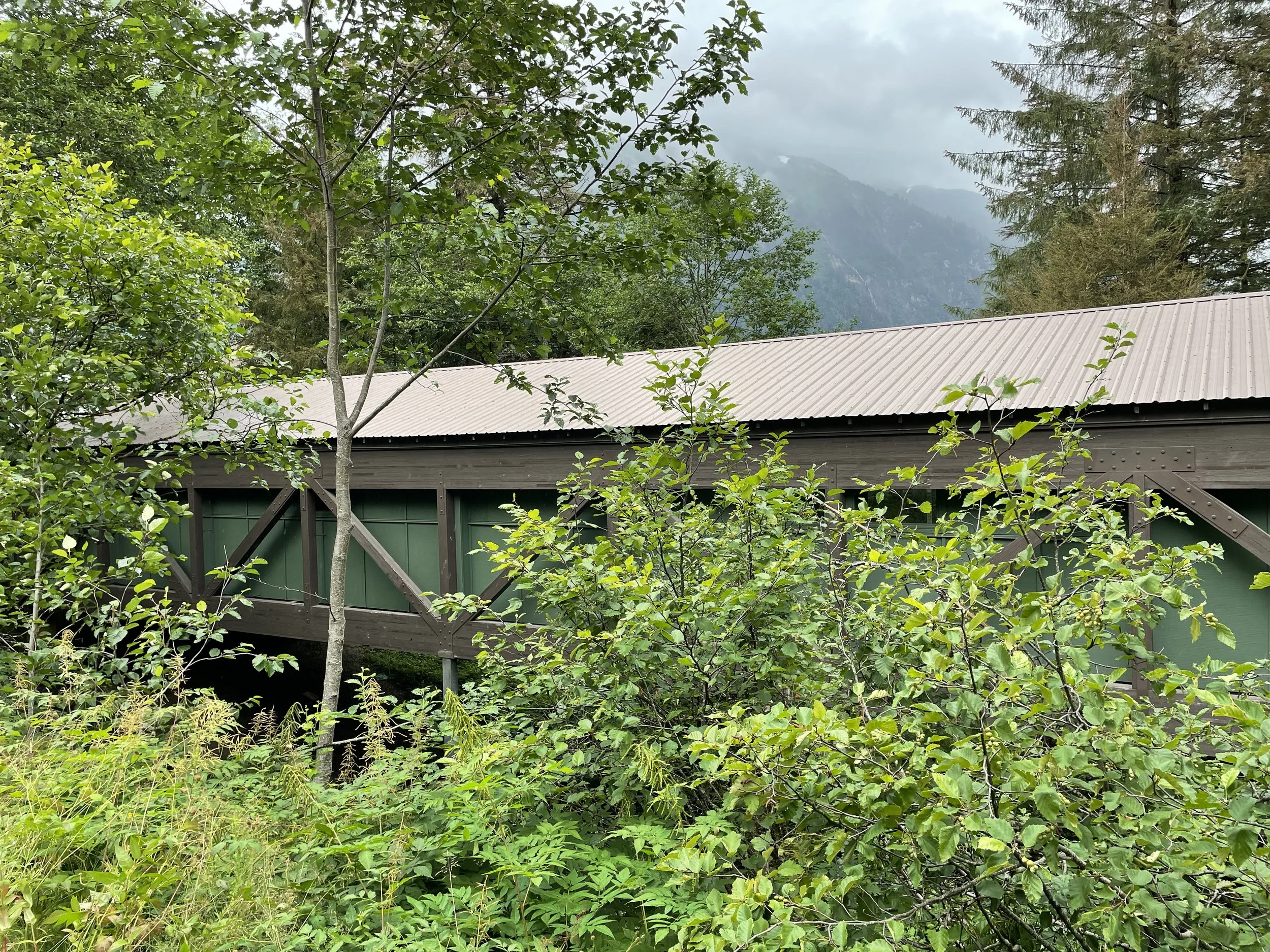With its staggering beauty everywhere you turn, Alaska is a wonder renewal machine. Of course, wherever you live or travel there are plenty of wonders. Just opening one’s eyes in the the morning should be a call to wonder. But the truth is that when we have seen a thing as wonderous as the view out our window a few times, we begin to forget just how incredible the world is, never mind our astonishing brains that take it in and to some degree make sense of it.
Alaska doesn’t give one a chance to become blasé about its miracles. Its mountains soar in many places more than 5,300 meters (16,000 feet) above sea level. Snowcapped even in mid-summer. Blue-ice glaciers are visible from the road. Curious sea creatures, from humpback whales to playful sea otters swimming on their backs in icy waters with expressions that look to the human eye like mirthful joy. Just as one view threatens to become ‘normal,’ around the bend is the proverbial ‘something completely different.’ A new vista awes and amazes. The weather changes from sunshine to wind and rain and back again multiple times in one day. The humans who live here are also, as you might expect, a unique breed: independent, rugged, and highly, highly opinionated. As I mentioned previously, traveling as we do is as much work as it is leisure but what a place to conduct business!
After leaving Haines and heading back into Canada, we continued along the Alcan (Alaska-Canada Highway) reentering the U.S. the following day and camping at Tok, Alaska. Tok has a large grocery store called, ‘The Three Bears.’ Didn’t see any bears inside, however half the store is devoted to food and the other half to camping, hunting, and fishing supplies. We picked up some veggies and Alaskan smoked salmon for dinner, a gallon of camping fuel for the stove, 5 kilograms of ice for the cooler, and a six pack of a delicious Alaskan Brewery IPA.
Sunset is still after 10 pm but now nearly six weeks after the summer solstice, it is actually sort of dark for a short time around 2 am though my Apple Watch app tells me that it is still not getting darker than twilight.
The following day, we turned south toward Valdez, following the Richardson Highway through some 200 kilometers of near wilderness. Spruce pine, clear, icy streams, and jagged mountain peaks covered with snow make up the view. The day we drove to Valdez was raining and the mountains were shrouded in mists.
Valdez is a surprisingly pleasant little town that splits its economy among fishing, tourism, and oil. There is lots of evidence of industry yet it makes a great base camp from which to enjoy the outdoors. Located on Prince William Sound, Valdez is surrounded on all sides by mountains, which we were able to see on the two days of sunshine of the five that we were there. While there, we had two bike rides, one to a lake beside a glacier, the other to a salmon hatchery where fat sea lions gorged on the returning pink salmon and hordes of sea gulls gathered to scarf up the fish guts that the sea lions were too refined to devour.
We also booked a day-long boat tour on the sound led by a salty, old captain who spoke non-stop over a loud speaker for the entire 8 hours of the journey in a way that was oddly both stream of consciousness and at the same time sounded completely rehearsed, as if he were reciting a history of Valdez written by a James Joyce turned right-wing extremist that he had read aloud every day since 1979, all delivered in a kind of sing-song cadence.
I found it most irritating until the swells in the open water of the sound caused me to become so seasick that I dashed to the rails where I dry-heaved while the water coming over the sides of the boat soaked me to the skin with freezing salt water. Then with the help of Barbara’s steady hand (she doesn’t get seasick), I lurched back inside the hold and buried my head in my lap until the waters settled down and I was able to look up again.
After that, I was so grateful not to be feeling violently ill, that the incessant diatribe which included mocking vegetarians, ecologists, Democrats, and trans-people didn’t seem as onerous by comparison to being sick as a dog.
I was one of the lucky ones. Some of the other passengers didn’t recover until we were back at the dock that evening.
In spite of the owner’s apparent distain for vegetarians, the little café on board offered (in addition to brownies, muffins, popcorn, and hotdogs) vegetarian chili available for purchase. You can always rely on commerce to trump prejudice in all civilized societies. Given the uneasy state of my stomach, however, I couldn’t hazard the risk and therefore cannot report on how tasty it may have been.
In spite of the challenges of the rough seas and the unenlightened views of our captain (our captor?), I must admit that we did get incredibly close to the Columbia Glacier (and the large pieces of it that floated by apparently nonplussed by our guide’s insistence that climate change is a hoax). We also saw Bald Eagles, the aforementioned mirthful sea otters, and sea lions loafing at their ease on rock islands and buoys. These were not insignificant recompense for the indignities I suffered on board at the hands of the sea and the breathless rant of Cap’n Salty.
Whatever your views on petroleum and its effect on the planet, there is no doubt that oil has been good to Valdez. Oil revenue has built beautiful schools, surprisingly prosperous suburbs, and even paid for a Tesla in a driveway or two apparently without irony. The roads are in fine repair and there is even a full-sized Safeway in town, the first national chain grocery store we have seen in Alaska so far.
We could have easily spent several more days in Valdez without running out of things to do and see, but with July dwindling down and much more of the state still to cover, this morning saw us packing up and heading back up the road to Glennallen.
From here we booked a day tour to McCarthy which thrived as a copper mining depot until 1938 when the copper deposits were exhausted. Since then it has been mostly a ghost town reporting just 42 residents in the 2000 census. They say it is possible to drive the 158 km from Glennallen to McCarthy over the unpaved road in a regular car, but with just one spare tire and that a ‘doughnut’ we decided to leave the driving to others freeing us to enjoy the wonders sure to be served up without the stress of a blowout on a deserted road miles from cell phone service, never mind the towing service.
Alaska is a wonder renewal machine but it also reminds me that wonders and astonishment are everywhere. You don’t need to travel 8,000 km to be astonished. You just need to remember to see and not allow yourself to become jaded by the miracles the world presents every day. I am thinking about the fox that trots across our lawn at home every day, the wren that nested and hatched its young under the lid of our propane tank this spring, the little snake our neighbor Kitty found in our basement on her periodic inspection during our absence, and the owl that calls at night from the trees in our little town in suburban Maryland.
Wild and wonders are everywhere.

